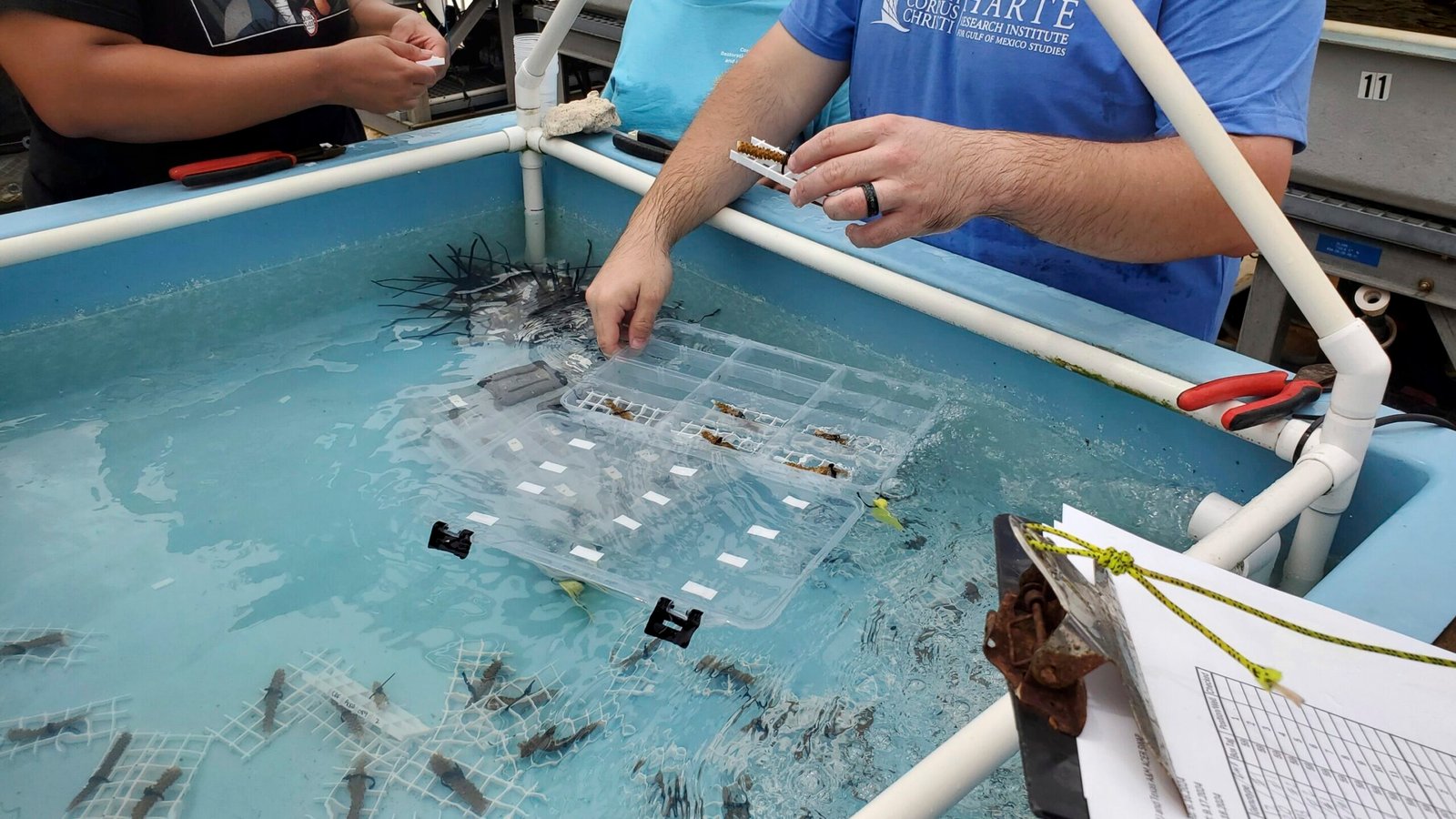
Scientists have moved about 300 endangered sea corals from South Florida to the Texas Gulf Coast for research and restoration.
Nova Southeastern University and Texas A&M University-Corpus Christi researchers packed up the corals Wednesday at the NSU’s Oceanographic Campus in Dania Beach. The sea creatures were then loaded onto a van, taken to a nearby airport and flown to Texas.
Researchers were taking extreme caution with the transfer of these delicate corals, NSU researcher Shane Wever said.
“The process that we’re undertaking today is a really great opportunity for us to expand the representation of the corals that we are working with and the locations where they’re stored,” Wever said. “Increasing the locations that they’re stored really acts as safeguards for us to protect them and to preserve them for the future.”
Each coral was packaged with fresh clean sea water and extra oxygen, inside of a protective case and inside of insulated and padded coolers, and was in transport for the shortest time possible.
NSU’s marine science research facility serves as a coral reef nursery, where rescued corals are stored, processed for restoration and transplanted back into the ocean. The school has shared corals with other universities, like the University of Miami, Florida Atlantic University and Texas State University, as well as the Coral Restoration Foundation in the Florida Keys.

Despite how important corals are, it is easy for people living on land to forget how important things in the ocean are, Texas A&M University-Corpus Christi researcher Keisha Bahr said.
“Corals serve a lot of different purposes,” Bahr said. “First of all, they protect our coastlines, especially here in Florida, from wave energy and coastal erosion. They also supply us with a lot of the food that we get from our oceans. And they are nurseries for a lot of the organisms that come from the sea.”
Abnormally high ocean temperatures caused widespread coral bleaching in 2023, wiping out corals in the Florida Keys. Texas A&M University-Corpus Christi turned to NSU when its partners in the Keys were no longer able to provide corals for its research. Broward County was spared from the majority of the 2023 bleaching so the NSU offshore coral nursery had healthy corals to donate.
-

Texas A&M University-Corpus Christi researcher Keisha Bahr prepares live corals for transport at the Nova Southeastern University’s Oceanographic Campus in Dania Beach, Fla., Sept. 18, 2024. Credit: AP Photo/David Fischer
-

Nova Southeastern University researcher Shane Wever prepares live corals for transport at the school’s Oceanographic Campus in Dania Beach, Fla., Sept. 18, 2024. Credit: AP Photo/David Fischer
“We’re losing corals at an alarming rate,” Bahr said. “We lost about half of our corals in last three decades. So we need to make sure that we continue to have these girls into the future.”
Texas A&M University-Corpus Christi is using some of these corals to study the effects of sediment from Port Everglades on coral health. The rest will either help the university with its work creating a bleaching guide for the Caribbean or act as a genetic bank, representing nearly 100 genetically distinct Staghorn coral colonies from across South Florida’s reefs.
“We wanted to give them as many genotypes, which are genetic individuals, as we could to really act as a safeguard for these this super important species,” Wever said.
© 2024 The Associated Press. All rights reserved. This material may not be published, broadcast, rewritten or redistributed without permission.
Citation:
Endangered sea corals moved from South Florida to the Texas Gulf Coast for research and restoration (2024, September 19)
retrieved 19 September 2024
from https://phys.org/news/2024-09-endangered-sea-corals-south-florida.html
This document is subject to copyright. Apart from any fair dealing for the purpose of private study or research, no
part may be reproduced without the written permission. The content is provided for information purposes only.
